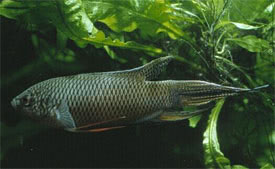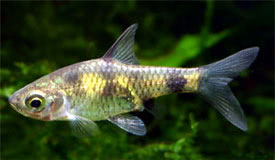
 Magyarul / Hungarian
Magyarul / Hungarian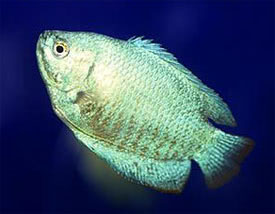

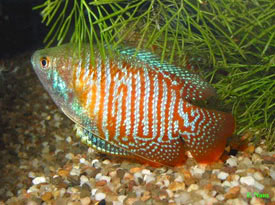
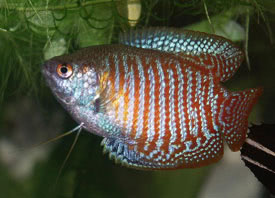
- Scientific name: Trichogaster lalius
- Synonyms: Colisa lalius, Colisa unicolor, Polyacanthus lalius, Trichopodus lalius
- Common name: Dwarf gourami
- Group: Labyrinth fishes
- Habitat: Asia; Inhabits vegetation choked floodplains of Bengal and Assam (of India) and Myanmar (Burma).
- Size: 4 cm
- Biotope: Slow-moving rivers, lakes
- Social behavior: This timid species is peaceful towards other species. An excellent community fish for those tanks housing other peaceful fish. This species can be kept in pairs or in groups. At spawning times, males defend a large territory.
- Diet: Live, insect larvae, Tubifex, insects, crustaceans, flakes, occasionally algae, pellets, tablets
- Breeding: Quite easy
- Tank: Minimum 60 litres
- Population: 1 couple for 60 litres
- Decoration: The substrate should be dark to bring out the colors of this pretty fish. Plant the corners and sides of the tank heavily and allow open swimming areas in the middle. A few floating plants are recommended to provide areas of shade.
- Temperature: 16-28 °C
- pH: 6,5-7,2.
- Hardness: 5,5-6,72NK°
- Lifespan: 4 years
Description: The body is oval-shaped with strong lateral compression. The anal And dorsal fins begin in the frontal part of the body, and extend nearly to the fan-shaped caudal fin. The ventral fins are long and filamentous. Males are generally orange-red with numerous transverse strips which are light blue in color. The back is orange and the belly is silver-turquoise. The dorsal, caudal, and anal fins are orange with patterns of light blue markings. The ventral fins are also orange. Females are duller in color.
Males are more colorful than the silvery females.
The male constructs a bubble nest of bubbles and plant debris in a shallow tank. The water should be soft to medium hard (2-6 dH) and slightly acidic (pH 6.2-6.9).
Each act of spawning (embracement) results in 50-200 eggs, until 400-600 eggs are laid. The male spits the eggs into the nest. Remove the female at this point. The male will care for the brood, although he should be removed when the eggs hatch 24 hours later. Start feeding the fry with infusoria and roftiers, then with Artemia nauplii. The fry must be frequently sorted according to size or else cannibalism will occur.




